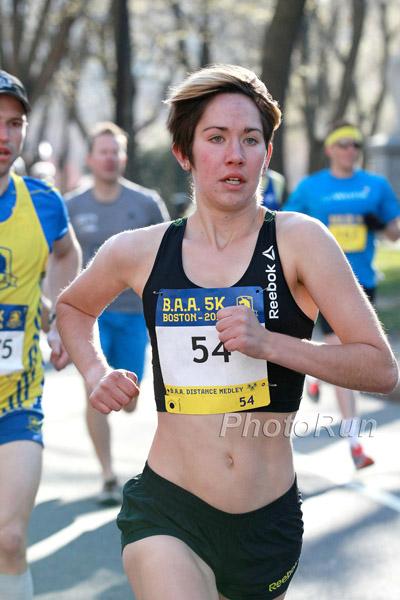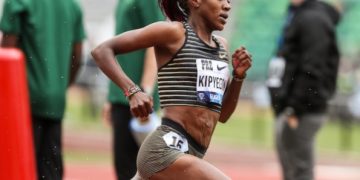 The Cal International Marathon is one of the finest marathons in the known world. It caters to runners who want to run their very best. In 2018, 99 women and 54 men qualified for the 2020 U.S. Olympic Trials in Sacramento. Among the teams that did well was Zap reebok Fitness. Five athletes competed, five athletes got their Trials qualifier. Among them was Joanna Thompson, who wrote the following piece (Joanna scored a PB of 2:42.25), on her team mates.
The Cal International Marathon is one of the finest marathons in the known world. It caters to runners who want to run their very best. In 2018, 99 women and 54 men qualified for the 2020 U.S. Olympic Trials in Sacramento. Among the teams that did well was Zap reebok Fitness. Five athletes competed, five athletes got their Trials qualifier. Among them was Joanna Thompson, who wrote the following piece (Joanna scored a PB of 2:42.25), on her team mates.
 Joanna Thompson, photo by Photorun.net
Joanna Thompson, photo by Photorun.net
Sunday, December second dawned bright and cold in Sacramento, California. Runners, busses, and traffic cones peppered the streets in front of the very same prison immortalized in song by Johnny Cash. It was time for the 36th annual California International Marathon, and, thanks to the heroes at the CPF and some much-needed rain, the city was not on fire.
View this post on InstagramA post shared by ZAP Fitness (@zapfitness_reebok) on
Beginning in Folsom and finishing at the steps of the capital building, the CIM course ungulates like a sine wave for the first ten miles before tapering into a gradual downhill finish. It is touted as “the fastest course in the West”, and indeed, remains one of the most popular qualifying races for both Boston and the Olympic Trials. This year’s race also happened to be the USATF Marathon Men’s and Women’s Championship, as well as the marathon debut for an unprecedented number of elite athletes.
A full fifty percent of the ZAP Fitness men’s roster were among the debutants.
Andrew Colley, Matt McClintock, Josh Izewski, and Joe Stilin were all seasoned road warriors, but none had yet tackled the full 26.2. Rather than face it alone, the four spent nearly every step of training during the eight-week buildup in one another’s footprints. “It was fun, for the most part,” says Joe.
ZAP Fitness’ program favors a strength-based approach for any distance. Nowhere is this more true than in the marathon, where head coach Pete Rea eases off high intensity, but pumps up mileage and workout duration “like inflating a balloon”. The athletes topped out at 120 mile weeks, with long runs of up to twenty-four miles.
Izewski, a world class triathlete who transitioned back to running relatively recently, says that the aerobic base from triathlon training helped him conquer the increased volume. “In a way, it was refreshing,” he says.
Marathon debuts are a tricky business – arguably more so than any other Olympic distance. Athletes have to thread the needle between establishing a quick pace and conserving as much energy as possible. This is especially difficult given the fact that for many first-timers, the race itself is their first time covering that distance, period.
Rea explains, “I’ve seen so many individuals run their debut and go for broke, then implode and want nothing to do with the distance. We wanted all four [ZAP guys] to walk away excited.”
Under Rea’s marching orders, the ZAP pack established a quick but conservative rhythm for the first eighteen miles. “It was a weird feeling, not having to be ‘on’ from the gun,” recalls Izewski. “It was like: are we racing?”
But the miles of training as a group helped all four stay in the groove of what could otherwise become a tedious race. Then they hit mile twenty; it was time to grind.
This is where the teammates’ experiences diverged.
Izewski and Stilin both put together stellar debuts, running away with third (2:13:15) and fourth (2:13:19) place finishes, respectively. The pair closed faster than they averaged, dropping to just under five minute pace over the last five k. “I almost feel lucky,” Stilin says, “it was the best road race I’ve ever had. I feel like there’s an alternate universe in which I did the exact same thing and died for the last four [miles].”
Izewski adds, “It was unlike any other race.” In his mind this proves that of all three components of triathlon, “running is by far the hardest.”
Andrew Colley ran strong through thirty k, when his textbook race was interrupted by a bout of vomiting. However, the remarkably tough Colley refused to let this deter him from the finish – he held on the last four miles for a 16th place finish in 2:15:27.
Matt McClintock did not feel good at the twenty mile mark. He proceeded to “slowly deteriorate over the final seven k”. However, McClintock is counting the experience as a positive. “This is the first time I can remember walking away from a race that didn’t go the way I’d envisioned without feeling disheartened,” he says. “I was competing against the race itself – the race got the better of me [this time], so now it’s time to get back on the horse and get the better of it.”
In spite of this, McClintock fought to the bitter end and walked away with an Olympic Trials qualifying mark.
In the end, Pete Rea chalks the day up to a win: while the ZAP crew’s marathon results covered a broad spectrum, all four labeled the experience a good one. Now, each is looking forward to different aspects of training. Stilin is curious to see how the marathon fitness translates to the track. Izuski hopes to improve his half marathon PR. Colley plans to tackle some higher milage, as racing schedules, respiratory infection, and minor leg tweaks prevented him from reaching peak volume during this buildup.
As for McClintock? He wants “to run another damn marathon, as soon as possible.”
If that’s not enthusiasm, I don’t know what is.





















